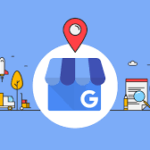Don’t wait for your audience to realize they need your product. Prove the value you bring to the table. How? With a little help from demand generation.
Today, we’ll walk you through everything you need to know to craft an effective demand generation strategy that educates prospective customers, nurtures leads in your funnel, and ensures your sales team is talking to only the highest-qualified prospects.
Let’s dive in!
Don’t Treat Demand Gen Like Lead Gen
We could write an article on the difference between demand and lead generation (and we have), but the core difference is:
In an AIDA funnel, demand generation happens at the top of the funnel. Demand gen captures prospects who are Aware and Interested. Lead gen happens later when prospects have expressed Desire, and you motivate them to take Action.
If audiences already understand your product and why they need it, create a lead gen strategy.
However, suppose your product is new (or you want to capture a more significant market share by converting unaware audiences). In that case, you’ll need demand generation to explain why customers need your product in the first place.
For example, you wouldn’t explain why a sales team needs a CRM. However, you would explain why they need meeting recording software that uses AI to analyze deals.
With that in mind, your demand generation approach needs to be strategic and data-driven.
How to Create a Demand Generation Strategy: Seven Steps
Step 1. Know Your Audience
Let’s start with an example.
FinLab first approached us with an innovative product: an innovation accelerator for fintech products in Singapore, Malaysia, and Thailand. However, fintech startups didn’t know they needed FinLab.
The first thing we did was to dive into customer personas:
- Who are your ideal customers?
- What do your ideal customers struggle with?
- How do they look for help with their challenges? Which channels do they use? Which verbiage do they use to explain their problems?
- How do they make purchasing decisions? What do they value most? How many (and what type of) touchpoints do they need to convert?
FinLab’s ideal customers were small businesses and startups. In addition to mapping out, we interviewed their ideal customers to understand their buyers’ journeys.
Ultimately, we found out what we needed to discuss in our content to generate demand for this innovative product. This trickled down to our general messaging, from blogs and ads to social media copy and gated content.
Don’t reinvent the wheel. Ask your ICPs what they want you to discuss to identify the sweet spot where their needs meet your offering.
Putting the audience research first helped us create a demand generation strategy that increased FinLab’s member acquisition by 840%.
Step 2. Create Your Demand Gen Roadmap
When generating demand, you must find the intersection of your audience’s problems and your offering.
In FinLab’s example, it made sense for them to discuss challenges like offline-to-online solutions because it was a pressing matter for their audience and tied into their offering.
Once an audience member entered the funnel through a top-of-the-funnel topic, we could easily nurture them with gated content and webinars until they were ready to convert (as shown through the HubSpot interaction and lead scoring data).
Step two is to create a similar demand-gen roadmap. Identify:
- Where (and how) will your audience enter your funnel.
- How closely will your TOFU content be related to your offering?
- How educated will they be on your product?
- Nurturing requirements.
- Which other proof, content, and show of value will you need to use to successfully nurture them?
- How many touchpoints will they need to become qualified prospects?
- How you’ll separate qualified and unqualified prospects.
- Which data points can you use to identify a highly-interested prospect?
- How many times should they engage with your business and content to be perceived as interested?
- Create a lead-scoring framework based on your historical data.
- The best approach to converting. Based on the content they’ve consumed and their journey (as shaped by your demand gen strategy), what is the most intuitive and natural way to convert these prospects into paying customers?
- Which materials will they need to fully understand your value?
- What questions do they have?
- Which objections frequently arise in conversations?
- Prepare additional materials to address objections and questions earlier on in the funnel.
- Lifetime value expansion tactics. If your offering has upsell or cross-sell potential, map the right offers to the right personas and decide how to include them in your content for increasing demand in your existing customer base.
Don’t worry: we’ll walk you through every step! It also helps to have historical data so you don’t have to guess what your ideal customers have in common.
Step 3. Prepare Your Top-of-the-Funnel Demand Generation Plan
Intercept your ideal customers’ questions with your TOFU demand-gen content.
One of our clients, Snapask, is a great example.
As a self-guided online tutoring app, the Snapask team reached out to us looking for help in increasing their app downloads. Extensive persona development helped us identify the right channels and moments at which their ideal customers would be most susceptible to consuming their content.
Keep the pain points and their questions in mind when you develop a content plan.
Perform SEO keyword research to identify the right queries, and organize it all to build the frame of your TOFU demand gen:
Which Content Types Should You Use for TOFU Demand Gen?
- SEO content. Intercept your audience when they’re searching for questions directly or indirectly related to your product offer. Then, create articles that show them how to actionably solve their challenges.
- Social media content. If your audience uses social media, stop their scroll by sharing organic or paid content that speaks to their pain points.
- Brand awareness and audience expansion PPC. Consider paid ads to boost your strongest pieces of content. Also, consider advertising features like Lookalike Audiences (Facebook) and Audience Expansion (Google Ads) to reach the right prospects based on your existing most profitable prospects.
- Participate in or sponsor events. Appear at events your ideal B2B audience frequents and create content that shows how your offering can help them achieve their goals.
- PR. Identify the influencers and channels your ICPs trust. Then, discuss a demand generation partnership.
How to Track Demand Generation at the Top of the Funnel
At this stage, you’ll track metrics showing how many audience members were exposed to and engaged with your content.
A/B test and optimize for engagement. Once you’ve found the right approach, scale it with reach in mind.
Step 4. Nurture Your Audience with the Right Demand Gen Content Types
The “upsell” to every TOFU content piece should be a way to enter your funnel by accessing gated content so you can nurture your audience by addressing more specific pain points, questions, and objections.
In FinLab’s case, we repurposed their older webinar content:
In Miriqa’s case, we used retargeting ads to reach their website visitors with an interactive quiz:
You can also use retargeting ads to showcase testimonials and social proof. In B2B, you can frame it to go along with a downloadable case study.
Partner with influencers. Don’t just use them to source prospects; use them to boost your credibility during nurturing.
Using Drip Campaigns to Nurture Your Prospects
Paid ads are the most expensive option for nurturing your demand-gen prospects. However, as Miriqa’s example demonstrates – you can generate high returns. Miriqa saw a 1200% increase in revenue from BrewInteractive’s ad campaigns and increased their revenue by 67%.
However, email marketing is a must for nurturing your demand-gen audience.
Create drip campaigns that take your audience from their pain points to a successful resolution while addressing their objections and answering their questions.
You can do this through the newsletter content or by using email to promote the right gated content.
How to Track the Success of Your Lead Nurturing
Look at the percentage of audience members who advance to the next stage, expressing desire and taking action.
This is individual to every company, which is why…
Step 5. You Need to Identify Engaged Prospects with Lead Scoring
Dust off your Step 2 demand gen roadmap! It’s time to identify the promising touchpoints and behavioral signals showing someone’s genuinely interested.
Create a lead scoring model that assigns points to every interaction:
- 5 points for reading a blog post
- 10 points for accessing a gated content piece
- 10 points for opening a newsletter
And so on!
The more points someone has, the more interested they are.
Your sales team can focus only on the highest-scored prospects while your nurturing funnel keeps engaging the prospects who don’t have enough points.
Make sure this information is grounded in customer data. If you’re new to the market, work with seasoned demand gen providers or A/B test until you can identify your ideal customers by how they interact with your content.
Depending on your automation tool, you can even customize the offers you send to differently-scored leads:
For example, SendInBlue allows you to customize your next steps to the lead’s existing score.
When we worked with Enovatek, we built an absolute behemoth of a sequence to help them filter and convert highly-qualified leads:
Funnel away all the leads who aren’t highly interested back to your nurturing sequence while filtering for the people your sales team can hop on a call with.
Step 6. Drive the Point Home with Account-Based Marketing and Segmentation
Customer journeys all differentiate slightly, so personalize your next steps according to every prospect’s behavior.
Use account-based marketing tactics to increase your conversion rate:
- Identify your top prospects (segment by potential value, lead scores, or other business-critical parameters) and prepare a tailored approach to each prospect.
- Personalize at scale for different prospect segments with marketing automation.
For example, we used HubSpot marketing automation to increase Miriqa’s conversions. You can also use branching based on the actions prospects did (or didn’t) take.
Bottom-of-the-Funnel Content for Demand Generation
- Sales collateral. Prepare materials like case studies and playbooks that your sales team can bring to the table once the prospect books a demo.
- Retargeting ads addressing social proof, competitors, and objections. This is where understanding your ICPs comes in handy; address as many objections and questions as possible, so the prospect is 100% confident they want to purchase.
How to Identify Leaks & Successes
Your mileage will vary.
If you use a combination of account-based marketing approaches, you’ll need to look at the key dropoff points and content that contributed the most to making the lead take action.
Step 7. Keep the Demand Flywheel Spinning
Finally, once you’ve successfully converted a customer who started off by not even knowing they need your product, keep them happy by continuing to nurture them with customer success content:
- Webinars, whitepapers, and blog content about the market and industry changes.
- Personalized playbooks for achieving ICP’s goals.
- Social media content that addresses trends.
- Conferences, communities, and conversational marketing.
Airtable expands its template library to provide every template their customers may need.
Keep communicating with your audience:
- What are the new problems they’re struggling with?
- Which goals do they want to achieve?
Again, look for the intersection between your customers’ needs and your product offering. However, it’s essential to understand their success metrics and contribute to them actively with your content.
Prepare a referral program, too.
Keep collecting data you can apply to your existing demand gen and other campaigns. Once you turn a customer into a brand ambassador, you’ll feel it on your revenue.
But if you’re a savvy marketer, you’ll use happy customers to generate even more business. 😉
Demand Generation in Seven Steps (and Three Takeaways)
Just because your audience doesn’t know they need your product yet doesn’t mean all is lost. With an intelligent approach to demand generation, you can identify the right people and speak to their pain points, goals, and ambitions.
Remember:
- Find out what makes your ideal customers ideal. Understand how they behave, what they’re struggling with, and how they make decisions through different touchpoints.
- Don’t slide into their DMs, but intercept them with the content they need at that stage of their buyer’s journey.
- Filter out low-quality leads with marketing automation to delight your ideal customers with ABM.
- Keep the momentum going with referrals and demonstrate your willingness to help them succeed with customer success content.
At the end of the day, demand gen opens the doors to even more revenue than you forecasted.
Plus, your marketing and sales teams will get a kick out of turning an unaware prospect into a customer who can’t stop raving about your brand!





